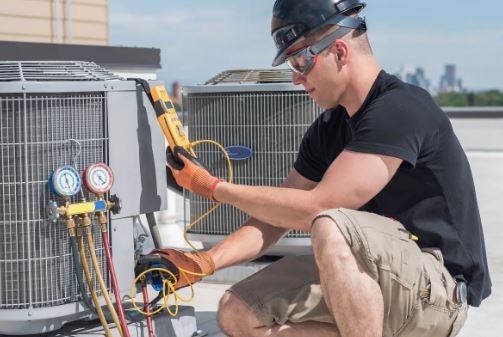The Impact of Upcoming Refrigerant Regulations on the HVAC Industry
The year 2025 is poised to be a pivotal moment for the HVAC industry as significant changes regarding refrigerants take effect. Driven by the Kigali Amendment to the Montreal Protocol new regulations in both the European Union and the United States will influence how refrigerants are manufactured paving the way for environmentally friendly alternatives. These changes are not only crucial for reducing global warming potential (GWP) but also for promoting the use of sustainable practices within the HVAC sector. This article delves into the regulatory changes, the alternatives to phased-out refrigerants, and how these shifts will impact the market and daily life.
01 Changes in Regulations
a. The European Union’s F-Gas Regulation
The European Union has set ambitious climate goals aimed at achieving carbon neutrality by 2050. Central to these efforts is the phasedown of Hydrofluorocarbons (HFCs), which are potent greenhouse gases. The EU’s F-Gas Regulation will prohibit the manufacture, installation, and import of single-split systems containing less than 3 kg of refrigerant that utilize HFCs with a GWP exceeding 750, effective January 1st, 2025.
This regulation is just the beginning; over the following years, other HVAC products, such as heat pumps, will also be subject to similar prohibitions, extending from 2027 to 2035. This phasedown is expected to significantly reduce the environmental impact of HVAC systems across Europe.
b. US EPA’s SNAP (Significant New Alternatives Policy) Program
In the United States, the Environmental Protection Agency (EPA) is implementing its own stringent regulations under the SNAP program. This initiative aims to phase out ozone-depleting substances by banning the use of refrigerants with a GWP greater than 700 starting January 1st, 2025. This regulation encompasses various HVAC products, including chillers, heat pumps, and commercial air conditioning systems. The transition will occur gradually, with restrictions on Variable Refrigerant Flow (VRF) systems also taking effect by 2028. These measures aim to drive innovation and the adoption of more sustainable refrigerants in the HVAC sector.
02 New Refrigerants as Alternatives
Its single-component nature also simplifies the recycling process, adding to its environmental advantages. R454B, on the other hand, boasts an even lower GWP of 466 and closely matches the operating pressure and discharge temperature of R410A, making it a seamless replacement. Both refrigerants present viable alternatives that align with the new regulatory framework while ensuring efficiency.
c. Natural Refrigerants
Natural refrigerants, such as R717 (ammonia), R744 (carbon dioxide), R290 (propane), and R600a (isobutane), are gaining attention due to their significantly lower GWPs compared to synthetic refrigerants.
While they offer environmental benefits and lower costs, some, like R717 and R290, pose flammability risks that necessitate strict safety measures and special handling protocols. In contrast, synthetic refrigerants often provide better efficiency and stability, making them preferable in many applications. Both refrigerants present viable alternatives that align with the new regulatory framework while ensuring efficiency.
03 How Will the Regulations Affect the Market and Daily Life?
The new regulations will dramatically reshape the HVAC market landscape.
Other nations may soon adopt similar regulations, prompting manufacturers and consumers alike to reevaluate their refrigerant choices. This trend will likely lead to a decrease in the availability of high-GWP refrigerants, potentially driving up their prices and making them less viable for new installations.
Moreover, as awareness of environmental issues grows, consumers are increasingly seeking out energy-efficient and eco-friendly products. This shift in consumer preference will further accelerate the adoption of low-GWP refrigerants and sustainable HVAC technologies. Both refrigerants present viable alternatives that align with the new regulatory framework while ensuring efficiency.
04 LG’s Products with Low GWP Refrigerants
Leading the way in this transition is LG, which has proactively adapted to the upcoming regulatory changes by integrating new refrigerants into its product offerings.The Multi V i (VRF) series has also adopted R32
while other Multi V products are shifting from R410A to more sustainable options such as R32 and R454B.
Furthermore, LG’s latest heat pump models utilize either R290, which has an impressively low GWP of 3, or R32, showcasing the company’s commitment to reducing its environmental impact.
By aligning their products with low-GWP refrigerants, LG is not only complying with regulations but also contributing to the HVAC industry’s broader effort to mitigate climate change.
Conclusion
The upcoming regulations on refrigerants in the United States and Europe signal a significant shift towards more sustainable practices within the HVAC industry. As manufacturers, including LG, adopt low-GWP alternatives, the industry is taking important steps to reduce its impact on global warming. This transition is crucial for ensuring a comfortable and healthy indoor environment while also protecting the planet for future generations.
The HVAC sector is evolving, and the changes set to take effect in 2025 will undoubtedly reshape the landscape of the industry. As regulations become stricter, the focus on environmental responsibility will only intensify.
By embracing innovative technologies and sustainable refrigerants, the HVAC industry can contribute to a greener future while continuing to provide essential services for modern life.







